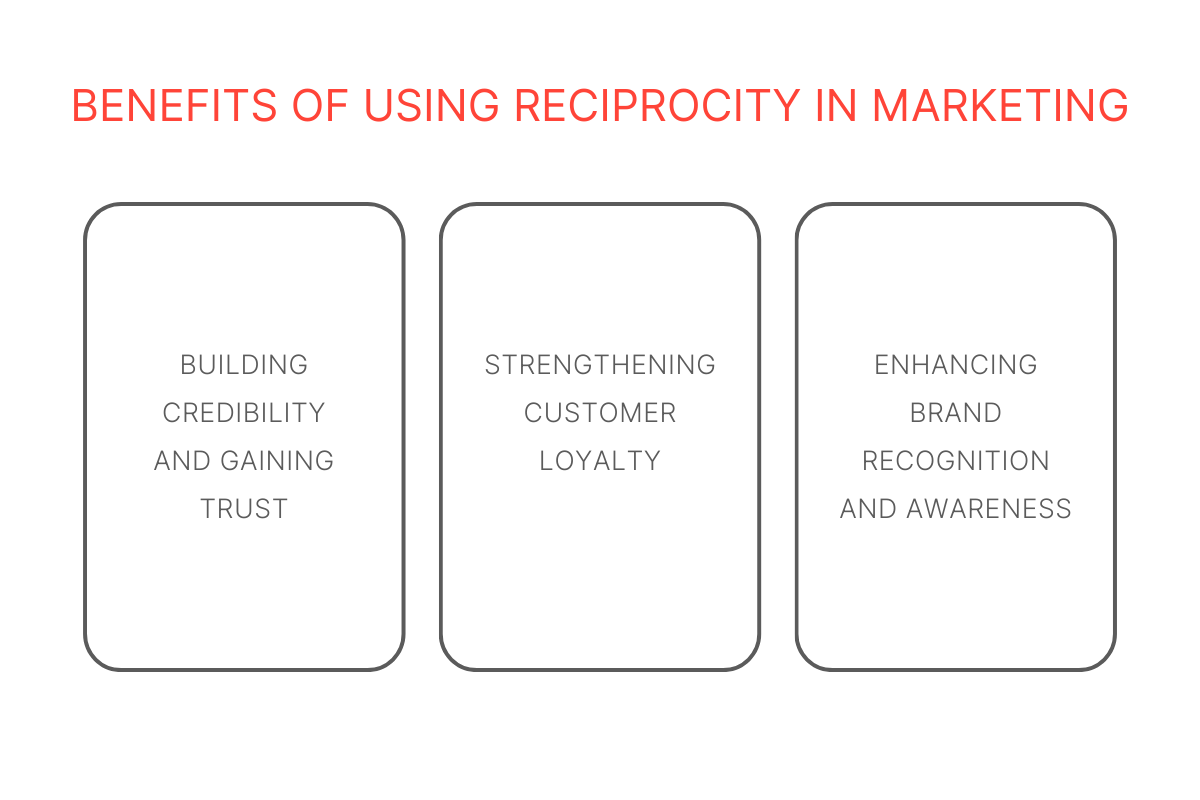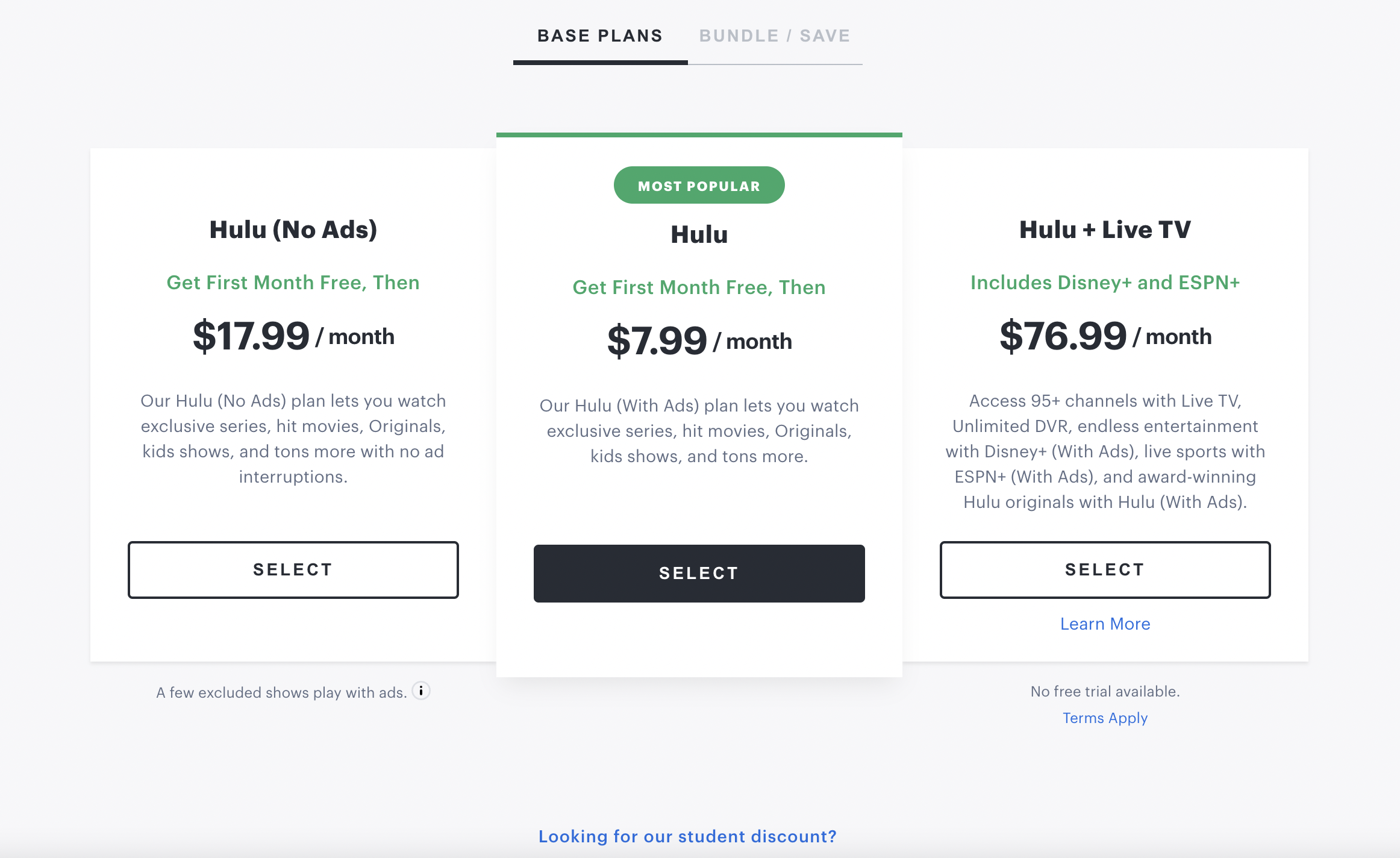How to explain and define reciprocity, especially in the context of marketing and psychology? Let’s start with a proverb, one that is familiar to most: “What you reap is what you sow”. What you do today will impact what happens in the future. The same goes for reciprocity; what you offer and give today will come back tomorrow, and it might come bearing gifts as well.
Reciprocity is all about giving to get in return and it is very useful and effective in marketing because it works even on complete strangers. This psychological behavior relies on creating the feeling of obligation or indebtedness and wanting to return the favor.
This principle is also called The Norm of Reciprocity, which was coined by Robert Cialdini, and is the first of six principles of persuasion he wrote a book about. The Reciprocity Principle is the leading one because it is instilled in humans from an early age; we are taught to give back to others each time we are given something.
What is reciprocity in marketing?
As a powerful tool in marketing, reciprocity allows you to offer value upfront to motivate your customers or clients to give you something in return.
This marketing principle represents an idea that a person is more likely to do what you expect of them if you give them something beforehand, whether it be a favor, a gift or anything else that holds a value to them. Reciprocity is built upon our natural tendency to return a favor, which can be explained through the simplest example of birthdays. Are you the type of person who keeps track of each and everybody who sends you birthday cards and even presents? If you are, you probably use this information to remember to return the favor to those who remembered your birthday.
It works the same way in marketing; when somebody offers you something for free or of significant value, you are more likely to give something back and act in the way they expect you to.
Benefits of using reciprocity in marketing
Brands that understand and know exactly how to use reciprocity can transform their business, build trust, deepen loyalty, stand out from their competitors in the market, and strengthen their relationships with customers and clients.

But what does leveraging the principle of reciprocity in marketing give back to the brand? There are numerous benefits of using reciprocity for the brand: building credibility and gaining trust, strengthening customer loyalty, enhancing brand recognition and awareness, increasing interest in brand, helping the brand get closer to its audience, making the customers brand advocates.
Building credibility and gaining trust
All lasting relationships are built on the foundation of trust. The same principle applies to business. When a brand offers something of value to a new customer, it shows that the brand prioritizes customers’ needs and interests without immediately asking for anything in return.
Breaking the ice with new clients and customers, who are still not completely sold on brand’s products or services, can be a tough challenge. That is where reciprocity marketing comes into play. By initiating a relationship with a favor, a gift, or a gesture of trust, brands make potential customers more receptive to future interactions. Day after day, year after year, all these gestures build brand credibility and make the brand trustworthy.
Strengthening customer loyalty
How would you describe a loyal customer? It is not only a person who repeats purchases or uses the brand’s services daily; a loyal customer shares a strong emotional bond with the brand. When a brand uses reciprocity in a genuine and honest way, it creates a deeper, lasting emotional connection with the customer.
It is important to make customers feel valued, instead of seeing them as just a means to enhance your business. If customers feel valued and important, they are more likely to return.
Enhancing brand recognition and awareness
Gestures of kindness and value work wonders when it comes to word-of-mouth marketing. People love to share their positive experiences with a brand, especially if a brand has gifted them with something they appreciate, and even more so if a bond of loyalty has already been built between the brand and the customer.
Whether it is a valuable giveaway, an extended free trial for an amazing service, exclusive gift, or a useful piece of content; reciprocity can be leveraged through various acts, and they are more likely to be shared, discussed, and remembered, simultaneously building brand awareness and recognition within the brand’s audience.
How to use reciprocity in marketing
The concept of reciprocity is not a modern one; it has been a fundamental part of our lives and evolution for hundreds, or even thousands of years. Quid pro quo. If you scratch my back, I will scratch yours. Give to get in return. All of these sayings apply to the principle of reciprocity, even in marketing. But, like many other psychological phenomena, reciprocity is better understood through examples.
Offer free content or products
Who does not like free things? From a sweet sample in a candy store or a beauty product sample at your local pharmacy, all the way to useful content for certain audiences, free content and products are one of the most-used methods of reciprocity in marketing.
Imagine yourself walking down a produce aisle in a big supermarket — at least once a week, you will see a special branded corner offering free samples of products to everyone. It can be anything from fruit, cookies, laundry detergent to coffee or dairy products.
The goal is to promote the brand and the products and services it offers, but the first step is to offer something for free to potential customers. That way, potential customers learn about the brand, and because they have been gifted with something free, they are more likely to choose that specific brand next time they are in need of something the brand offers.
Give special discounts
If you can not get it for free, at least get a discount, right? Special discounts are another significant method of reciprocity that can be used in almost every type of business or industry. How does it work?
Many online stores or websites offer discounts to new customers. The only thing they ask in return is to sign up for their newsletter. It is not only applicable to online shops, it works the same way in physical stores as well. Promotional workers might approach you on the street and offer you an informational leaflet that explains all of their products and services while also giving you a discount for your first purchase in their store.
You are very likely to use the discount you have been given but also to tell your friends, family, and colleagues about it.

Source: us.shein.com
If anybody knows how to attract new customers by offering special discounts and coupons, it is definitely Shein. The moment you visit their web shop, you see numerous pop-up messages offering you free delivery or discounts. It would be a shame not to use them, would it not?
Let potential customers try your services with free trials
More often than not, you are unsure if something is worth the cost. Should you pay for it or not? That is where free trials come into play. An amazing method of reciprocity that is used by almost every service provider you can think of, or at least by those who know what they are doing.
A free trial is like a sneak peak into everything a brand has to offer through their product or service. It allows you to test it, gather information about it, see for yourself if it works for you, and then you can decide whether you want to pay the full price or not.
Once you get the free trial and test the service or product, the probability that you will keep using the service or product and paying for it becomes much higher than without the free trial.

Source: hulu.com
Although Netflix, the biggest video streaming service today, does not offer free trials, one of their biggest competitors, Hulu, offers a one-month free trial with an additional discount for students.
Host events and webinars
How can hosting events and webinars help brands stand out and compel audiences to give them something in return? Even if it sounds unrealistic at first glance, it really brings back a long-term value to brands.
Sharing knowledge, expertise, and experience with others allows brands to give back to their community and facilitates learning. Events like webinars, educational workshops, and lectures create a sense of togetherness and community among attendees, boost networking, and allow knowledge to be consumed and shared.

Source: detangled.degordian.com
Good examples of this reciprocity method are our own Detangled educations, which are available and free for everyone. Users can watch them in real-time or on demand, and the main goal of Detangled is to share knowledge about digital marketing. At the same time, it positions our own employees as experts and recognizable names in the digital industry.
Measure the impact of your campaigns
Can reciprocity be measured? Sure thing, you just need to know which KPIs (key performance indicators) are the most important to you. Is it increasing sales, enhancing brand awareness and visibility, or maybe building a strong community around your brand?
Businesses can quantify the results and measure the impact of the reciprocity methods they use in their marketing strategies by monitoring website visits, online purchases, repeated visits and purchases, interactions with customers, and engagement levels on social media platforms.
Keeping an eye on customer engagement and loyalty could reveal the success of reciprocity; stronger engagement usually means longer website visits, deeper interactions with value-driven content, and increased participation in brand events.
The effect of reciprocity marketing on customer loyalty will be reflected through the increase of testimonials and positive ratings and reviews, but also through referrals and recommendations that loyal customers share about the brand.
Common mistakes in reciprocity marketing to avoid
There is a fine line between being seen as a trustworthy brand that offers valuable content or free service and being seen as a manipulative brand attacking its customers with aggressive sales approaches. The key to balancing these two opposites lies in authenticity and genuineness. Your audience will feel your true intent and recognize the reason why you do everything you do. If you are not sincere and honest towards your loyal customers, it most probably will backfire and hurt your brand’s reputation.
How much giving is too much giving? Even the biggest and most stable businesses need to keep their profitability in mind each time they offer something for free. Reciprocity can strengthen customer loyalty and build valuable relationships with them, but at the same time, companies need to find a balance between reciprocity and profitability that works best for them.
Another potential mistake, when it comes to reciprocity in marketing, is managing customer expectations. Once you give your customers something valuable without asking anything in return, they will expect it again. The more you keep giving, the more they will expect from you. This can become a serious challenge for businesses because it is hard to keep coming up with different ways to offer value to your customers, keeping them engaged and satisfied, while allowing your company to thrive without obstacles in its way.
To sum things up…
The more we delve into interconnections of marketing and psychology, the more apparent it becomes how much marketing relies on human behavior, and how understanding psychological and sociological factors and phenomena can aid you in your marketing activities.
From social proof and FOMO strategies to reciprocity in marketing — understanding the reason behind human behavior and everything that has influenced human evolution and development during hundreds and thousands of years allows you to leverage this information when creating marketing strategies or planning specific campaigns and activities.
This includes reciprocity too — more often than not, you need to be the one who offers something first, in order to get something in return.



